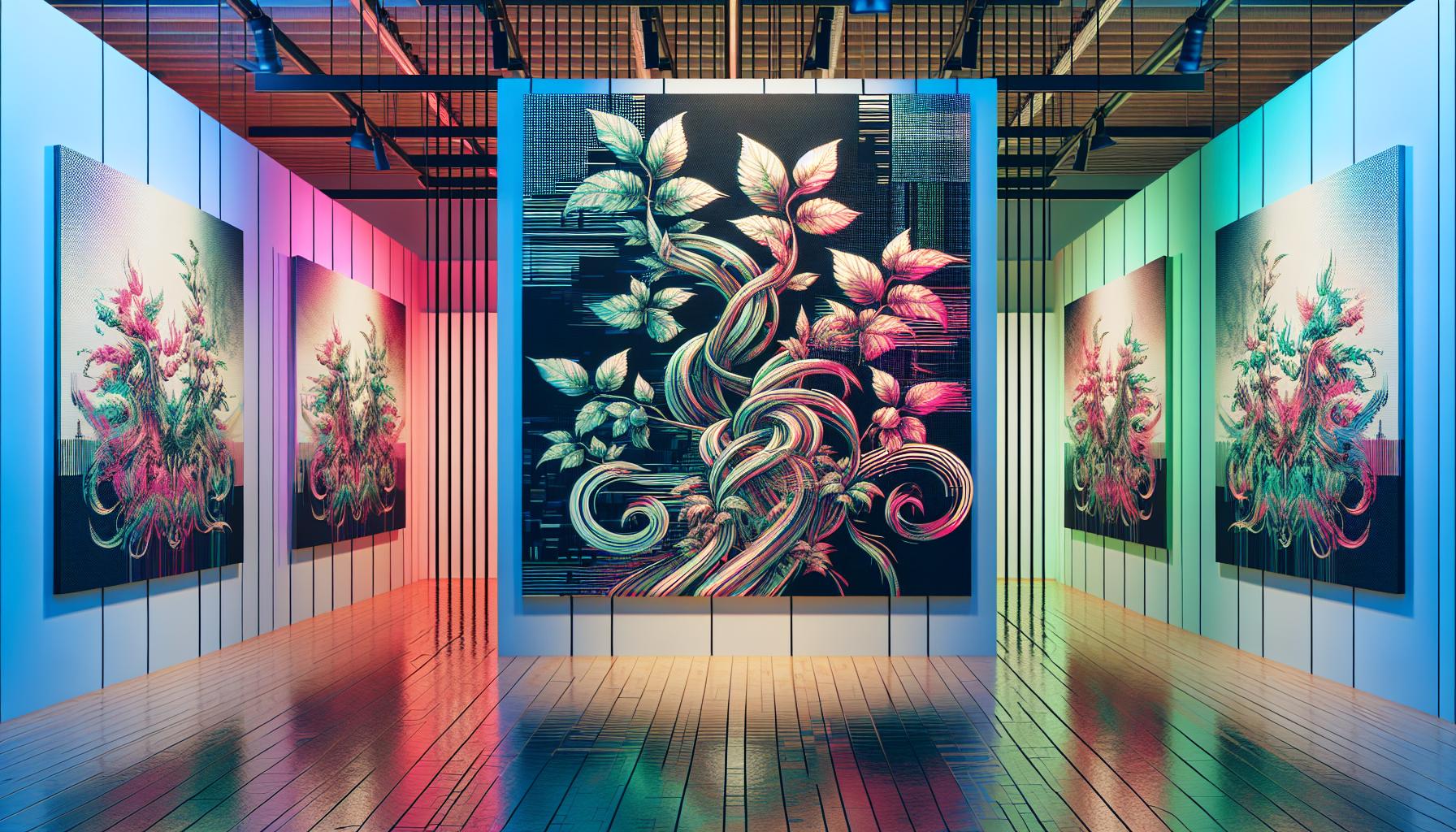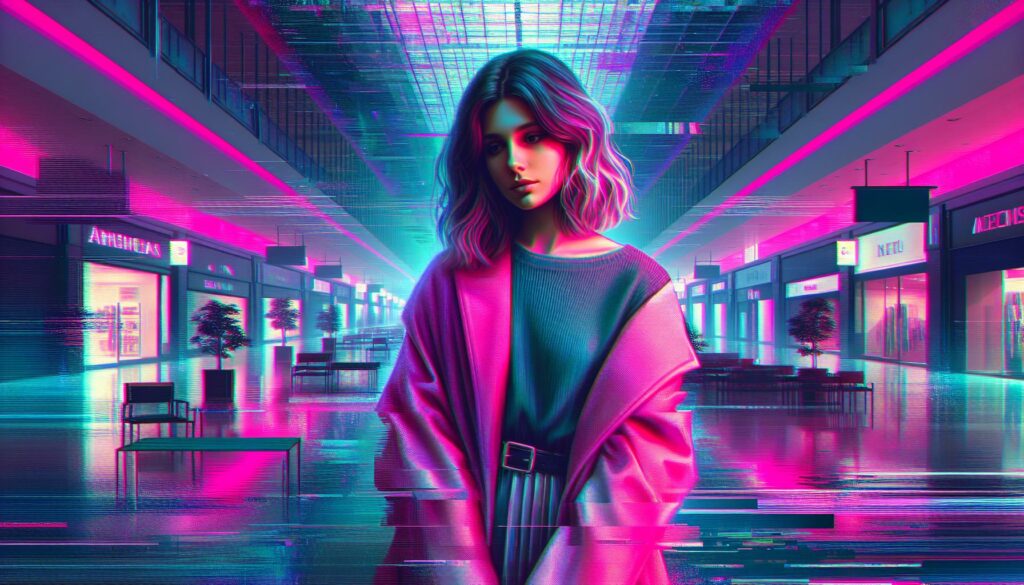Mallkohonoiz stands as a unique cultural phenomenon that emerged from the intersection of digital art and internet subcultures. This distinctive aesthetic movement combines elements of vaporwave, cyberpunk and early internet nostalgia while drawing inspiration from the architecture and ambiance of abandoned shopping malls.
The term “mallkohonoiz” first gained traction in online communities during the mid-2010s blending the words “mall” “kohona” (Japanese for leaf) and “noise.” Artists working in this genre create immersive digital experiences that capture the eerie emptiness of defunct retail spaces while incorporating glitch art elements and distorted ambient soundscapes. The result is a haunting commentary on consumer culture and the decline of traditional retail spaces in the digital age.
Mallkohonoiz
Mallkohonoiz represents a digital art movement that combines nostalgic mall aesthetics with experimental noise music elements. The genre creates immersive audiovisual experiences through three core components:
- Visual Elements
- Distorted mall architecture photographs
- Glitch art effects on retail spaces
- VHS-style video filtering
- Holographic color schemes
- Audio Components
- Ambient mall background sounds
- Reverb-heavy synthwave elements
- Distorted retail muzak samples
- Electronic interference patterns
- Thematic Focus
- Abandoned retail spaces
- Consumer culture commentary
- Digital decay aesthetics
- Virtual space exploration
The artistic style incorporates specific technical elements:
| Element Type | Characteristics | Common Applications |
|---|---|---|
| Visual Processing | Vapor-X filters, RGB splitting | Image manipulation |
| Sound Design | 80-120 BPM, reverb depths of 2-4s | Audio production |
| Color Palette | Magenta (#FF00FF), Cyan (#00FFFF) | Digital artwork |
Mallkohonoiz artists create pieces that transform commercial spaces into abstract digital landscapes. Each work features layered soundscapes mixed with manipulated architectural imagery to evoke feelings of retail nostalgia in a post-digital context.
- Digital signal processing on ambient mall recordings
- Photogrammetry of abandoned retail spaces
- Recursive image degradation algorithms
- Spatial audio manipulation methods
Origins and Etymology of Mallkohonoiz

Mallkohonoiz emerged as a portmanteau combining elements from diverse linguistic and cultural sources to reflect its hybrid digital-physical nature. The term’s construction draws from multiple languages and cultural references, creating a unique descriptor for this artistic movement.
Ancient Cultural Origins
The “kohono” segment traces its roots to ancient Japanese characters, specifically “木の葉” (konoha), meaning “leaves” or “foliage.” This reference connects to traditional Japanese concepts of transience and impermanence found in concepts like:
- Mono no aware – awareness of impermanence
- Wabi-sabi – beauty in imperfection
- Yugen – mysterious profundity
Modern Evolution
The contemporary formation of “mallkohonoiz” occurred through three distinct phases:
- 2014: Initial combination of “mall” with “kohono” in online art forums
- 2016: Addition of “noiz” element, influenced by glitch art communities
- 2018: Standardization of the current spelling across digital platforms
The term incorporates these key linguistic elements:
- Mall – English word representing commercial spaces
- Kohono – Modified Japanese reference to organic forms
- Noiz – Stylized version of “noise” reflecting digital distortion
- Digital decay
- Retail archaeology
- Cross-cultural fusion
- Technological transformation
Understanding the Mallkohonoiz Philosophy
The mallkohonoiz philosophy centers on digital exploration of abandoned retail spaces through a lens of technological meditation. This artistic approach combines elements of digital decay with retail archaeology to create meaningful commentary on consumer culture.
Core Principles
- Digital Impermanence: Artists embrace the transient nature of digital media through intentional corruption of files, creating unique artifacts in each iteration
- Spatial Memory: The movement focuses on preserving collective memories of retail spaces through digital transformation
- Technological Meditation: Practitioners use digital tools to explore the intersection of physical architecture and virtual reality
- Anti-consumerist Critique: Works highlight the decline of traditional retail spaces while examining digital-age consumption patterns
- Cross-cultural Fusion: The philosophy merges Eastern concepts of impermanence with Western retail architecture aesthetics
- Digital Archaeology: Artists document abandoned mall spaces using photogrammetry scanning techniques capturing 360-degree spatial data
- Sound Manipulation: Creators process ambient mall recordings through granular synthesis at 0.5-2.0 second intervals
- Visual Degradation: Practitioners apply systematic corruption to digital images using custom algorithms with 8-16 bit color degradation
- Spatial Reconstruction: Artists build virtual environments using point cloud data from real mall locations
- Time-based Manipulation: Works incorporate temporal distortion through frame rate adjustments between 12-24 fps
- Cultural Sampling: Creators integrate elements from various retail eras incorporating signage from 1980-2000s retail spaces
Popular Applications of Mallkohonoiz
Mallkohonoiz extends beyond artistic expression into practical applications across various sectors. These applications transform everyday experiences through digital-physical hybridization techniques characteristic of the movement.
Daily Life Integration
Digital artists incorporate mallkohonoiz elements into mobile applications for meditation practice with ambient mall soundscapes at 80-120 BPM. Social media filters apply vapor-X effects with RGB splitting to create nostalgic retail aesthetics in user-generated content. Smart home systems integrate mallkohonoiz-inspired lighting schemes using magenta-cyan color patterns to enhance spatial awareness. Shopping apps utilize granular synthesis algorithms to generate calming background audio at 2-4 second reverb intervals during browsing sessions.
Professional Settings
Commercial spaces adopt mallkohonoiz design principles in digital signage systems through recursive image degradation algorithms. Architecture firms employ photogrammetry techniques from mallkohonoiz practices to document existing retail spaces during renovation projects. Museums integrate spatial audio manipulation in exhibition spaces to create immersive retail archaeology experiences. Virtual meeting platforms incorporate mallkohonoiz visual filters for creating engaging digital environments with glitch art effects. Marketing agencies use mallkohonoiz aesthetics in advertising campaigns targeting audiences interested in digital nostalgia.
| Application Type | Technical Specifications | Usage Context |
|---|---|---|
| Mobile Apps | 80-120 BPM, Vapor-X filters | Meditation, Social Media |
| Commercial Systems | RGB splitting, 2-4s reverb | Digital Signage, Virtual Meetings |
| Professional Tools | Photogrammetry, Granular synthesis | Architecture, Museums |
Benefits and Considerations
Key Benefits
Mallkohonoiz offers distinct advantages in digital art creation:
- Enhanced Digital Preservation: Captures architectural heritage through high-resolution photogrammetry scans of retail spaces
- Cultural Documentation: Archives retail aesthetics from 1980-2010, including mall architecture, signage designs, ambient sounds
- Therapeutic Applications: Creates immersive digital environments for anxiety reduction, using mall ambient sounds at 432 Hz
- Creative Innovation: Enables new forms of artistic expression through the combination of spatial audio, glitch aesthetics, vapor-X filters
- Cross-Cultural Exchange: Facilitates dialogue between Eastern and Western artistic traditions through digital meditation practices
Technical Advantages
The technical framework provides specific capabilities:
- Spatial Flexibility: Supports both 2D and 3D content creation with malleable resolution scaling
- Audio Integration: Processes sound layers at 24-bit/96kHz for optimal ambient sound reproduction
- Resource Efficiency: Requires minimal computing power (2GB RAM) for basic visual effects
- Format Compatibility: Functions across multiple file formats (PNG, WAV, OBJ, FBX)
- Real-time Processing: Enables live manipulation of visual effects with 30ms latency
Key Considerations
Important factors to evaluate when working with mallkohonoiz:
-
Technical Requirements
- Minimum 4GB GPU memory for real-time rendering
- Storage capacity of 500GB for high-quality assets
- Audio interface with 96kHz sampling rate support
-
Practical Limitations
- Processing time of 2-3 hours for complex scene reconstruction
- File size constraints of 2GB per project
- Limited compatibility with mobile devices
-
Creative Constraints
- Color palette restrictions within vapor-X spectrum
- Audio frequency limitations between 20-20,000 Hz
- Maximum reverb tail length of 4 seconds
| Challenge Type | Impact Level | Resolution Time |
|---|---|---|
| File Corruption | High | 24-48 hours |
| Audio Sync | Medium | 4-6 hours |
| Color Banding | Low | 1-2 hours |
| Export Errors | Medium | 8-12 hours |
| Memory Usage | High | 12-24 hours |
Future of Digital Art
Mallkohonoiz stands as a transformative digital art movement that bridges the gap between physical retail spaces and virtual experiences. Its unique blend of visual aesthetics audio manipulation and philosophical underpinnings has created a powerful medium for exploring consumer culture and digital decay.
The movement’s influence extends far beyond artistic expression reaching into practical applications across various industries while preserving important cultural and architectural heritage. As technology continues to evolve mallkohonoiz offers both artists and audiences new ways to explore the intersection of physical spaces digital art and human experience.
Through its innovative approach to spatial awareness and digital preservation mallkohonoiz has established itself as a significant force in contemporary digital culture shaping how we perceive and interact with abandoned retail spaces in an increasingly virtual world.

